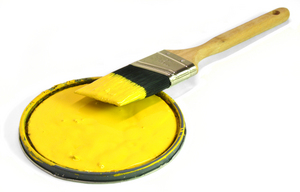Odds are, if you or your family is swimming this summer, someone is going to get Swimmer’s Ear. Swimmer’s Ear is an infection and/or inflammation of the external ear and ear canal caused by overexposure to, you guessed it, water. When water gets trapped in the ear canal it can cause bacteria to grow in and around the ear, leading to otitis externa, or more commonly, Swimmer’s Ear. When the skin is constantly exposed to water in and around the ears the skin becomes pliable and soft and bacteria is allowed in to get comfortable and breed, and voila! Swimmer’s Ear!
While the condition is painful, it is easily treated. Symptoms of Swimmer’s Ear are obvious, such as itchy or pain in the ear when the lobe is lightly pulled, milky or yellowy discharge from the ear (excess earwax) crusty and white earwax hardening on the outside of the ear and the earlobe, decreased hearing, swelling of the lymph nodes or earlobe, buzzing sound or humming in the ear, a heavy feeling inside the ear canal, and sharp, sudden pain in the ear. Symptoms of Swimmer’s Ear usually show up rapidly after excessive water exposure and are fairly noticeable.
To treat Swimmer’s Ear is fairly simple. First know what causes Swimmer’s Ear to prevent getting it. While water is the most common culprit, Swimmer’s Ear can be acquired in other ways as well, such as hair gels or hairsprays, dye, or lotion getting inside the ear and irritating it, a middle ear infection which leads to Swimmer’s Ear, using fingernails or dirty cotton swabs to clean the ear and trapping infection, not getting water out of the ears after bathing, or having narrow ear canals that retain water on a daily basis. To prevent Swimmer’s Ear one must take precautions to keep their ears free of moisture and bacteria. A great way to prevent Swimmer’s Ear is to use a blow dryer 18 inches from the ear and set on low heat or cool dry the ears after bathing rather than using cotton swabs, and cleansing the ear with a damp clean cloth if you suspect hair gel or spray in the ear. A healthy ear free of bacteria can help prevent Swimmer’s Ear.
To actually treat Swimmer’s Ear once it’s apparent evaporate the water in the ear with the blow dryer on low heat, swaying the nozzle back and forth rather than directly on the ear itself. Place rubbing alcohol on a cotton ball and gently saturate the outside of the earlobe and the visible part of the ear to kill infection and bacteria.
Another great fungus killer is vinegar. Place 3 or 4 drops in one ear, head tilted to the side to prevent dripping out, and leave for five minutes. Repeat with second ear (the first ear will drain the vinegar while treating the second, which is OK). After five minutes on the second ear, tilt head again to allow solution to drain. Do this 3 times a day for 3 days until symptoms improve.
To cure clogged water in the ear, Apple cider vinegar is a better choice. Take 3 drops of apple cider vinegar, dilute it with equal parts water or rubbing alcohol, and apply to each ear with head tilted appropriately for each ear, and let sit for 5 minutes each. This will clear the water so you can blow dry it out while killing the bacteria and fungus at once. This remedy can be applied after showering, bathing, or swimming at any time to prevent and treat Swimmer’s Ear.
Baby oil is one of the most common treatments for Swimmer’s Ear. Heat baby oil and place the warm (not hot) liquid into the affected ears with an eye dropper. Place a cotton ball over the ear canal to prevent drainage. This method helps ease the Swimmer’s Ear discomfort while killing the infection at the same time.
To avoid Swimmer’s Ear when swimming, applying baby oil to the ears prior to getting in water can help trap out water and keep healthy oils in the ear. Also draining the ear of water upon getting out by lightly tugging on the ear lobe and twisting in various directions to clear water from the canal and wiping the ears with a clean towel is an effective way to keep Swimmer’s Ear at bay. Keep your fingers out of your ears to prevent getting and spreading infection.
While Swimmer’s Ear is common and easily treated, see your doctor if you or anyone with the condition has it for more than 72 hours after treatment or if they are in terrible pain or exhibiting nausea, fever, disorientation or fatigue. This could be a sign of serious ear trauma and needs to be addressed as soon as possible.



